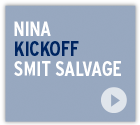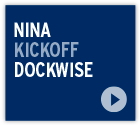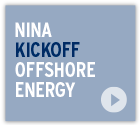NINA at Work articles
- Number 2 / 2024
- Number 1 / 2024
- Number 2 / 2023
- Number 1 / 2023
- Number 3 / 2022
- Number 2 / 2022
- Number 1 / 2022
- Number 3 / 2021
- Number 2 / 2021
- Number 1 / 2021
- Number 1 / 2020
- Number 4 / 2019
- Number 3 / 2019
- Number 2 / 2019
- Number 1 / 2019
- Number 4 / 2018
- Number 3 / 2018
- Number 2 / 2018
- Number 1 / 2018
- Number 6 / 2017
- Special edition / 2017
- Number 4 / 2017
- Number 3 / 2017
- Number 2 / 2017
- Number 1 / 2017
Media Library
TestimonialVideosNews Items
BRIDGING THE GAP BETWEEN TWO COMPLETELY DIFFERENT SAFETY CULTURE
Assistant Salvage Master Richard Robertson shares his thoughts and experiences.
“Last year I was involved in the refloating of the Transocean Winner, an oil rig that had run aground off the Western Isles of Scotland. Our client being Transocean, an offshore oil and gas company, meant safety was at the forefront of any planning or operation. Given that all our operations are permeated with safety as well, this should not have been a problem. However, when someone else has a different definition of safety, this can pose a dilemma.
PROCEDURES VERSUS DECISIONS ON THE SPOT
We had to work in conjunction with the rig crew. They wanted us to adopt their safety culture, with its procedures, rules and paperwork, while we are used to making decisions on the spot. Time was of the essence because the rig was in an emergency situation. If you only have ten days until the next spring tide, why ‘waste’ five on a risk assessment when we can do it in an hour? We openly discussed the scenarios with the client. With their approach, we would only be able to prepare the operation in ten days, with our approach we could refloat the rig in that time.
DOING DANGEROUS THINGS SAFELY
Now, you might get the impression we brush aside procedures to gain speed. Indeed, having time to submit paperwork for every task is a ‘luxury’ we do not have. This does not mean our way of working is less safe. Everything starts with training and experience of the personnel in the team. For task-specific safety, we have a team meeting in which we discuss what needs to be done, what could go wrong and what to watch out for. Everyone has their say. Once all are in agreement, we get on with the task at hand. These discussions may take a few minutes or an hour, depending on the complexity of the task. That is why I always say: in salvage we do dangerous things safely.
COMPROMISE
In the end, we were able to compromise on both sides. Our client acknowledged how we work: small teams of experienced personnel dictating operations and planning at the ‘coalface’ of the work. And we accepted that in their sector, there are standard procedures that need to be followed. What’s important is that both we and the client acknowledged that we wanted to achieve the same goal: to refloat the rig safely and not to risk life or limb for steel. You are on the same side, and the open communication NINA advocates helps you to express this.”
The Transocean Winner was successfully refloated two weeks after her grounding with the help of two Boskalis tugs – Union Bear and Union Princess.






